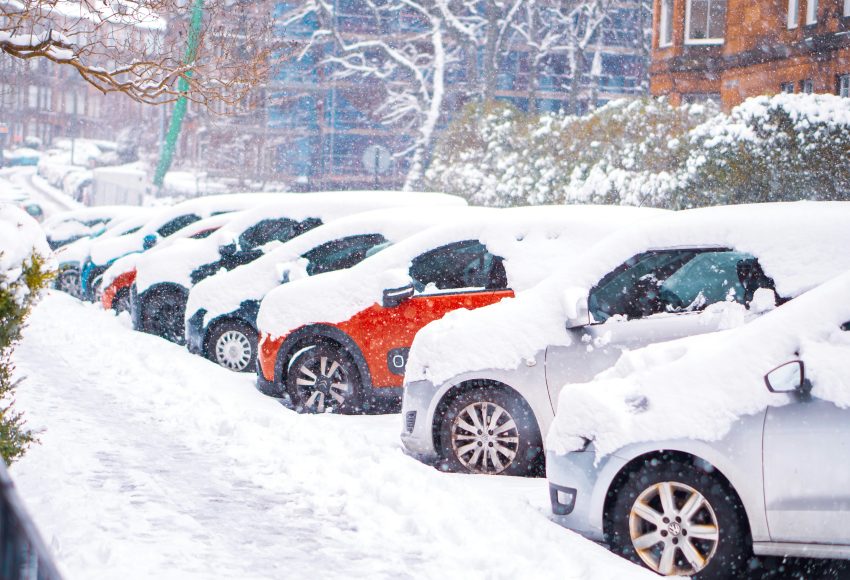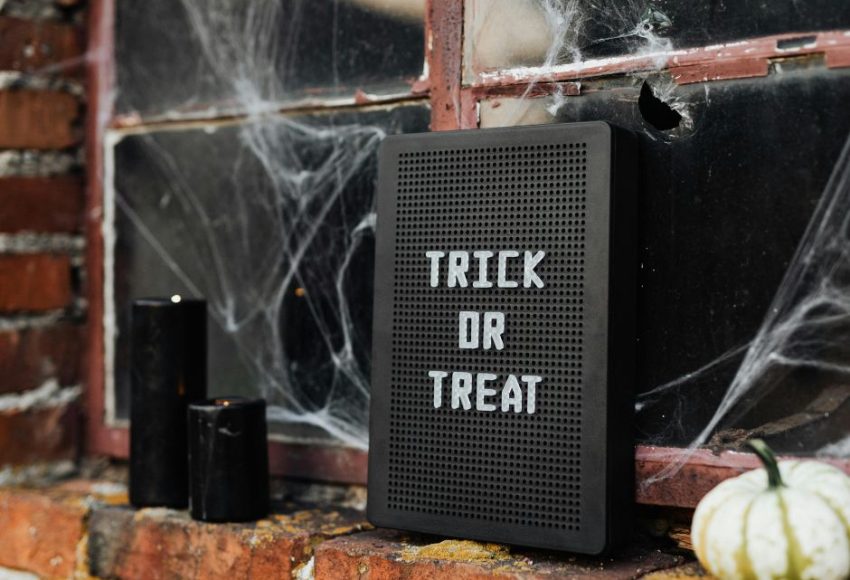As autumn rolls in, Ontario businesses face seasonal challenges–from fluctuating temperatures and heavy rainfall to falling leaves that can clog drains and gutters. Overlooking these routine maintenance tasks can lead to costly repairs, safety hazards, and potentially denied insurance claims.
Staying proactive with a fall maintenance checklist not only protects your property and assets but also ensures compliance with your commercial property insurance policy. In this guide, we explore key fall maintenance steps every Ontario business should take and highlight how proper upkeep can help reduce risks, prevent claims, and keep your coverage fully effective.
Why Fall Maintenance Matters for Your Business Insurance
When the weather cools, the risks to your commercial property increase. Failing to prepare your building for fall and winter can lead to costly damages and, in some cases, denied or reduced insurance claims. Most commercial property insurance policies include provisions that require the property to be maintained in a reasonable state of upkeep to keep coverage valid. Ignoring seasonal maintenance can be viewed as negligence, which may limit your ability to recover repair or replacement costs after a loss.
Common fall-related risks include weather damage from clogged gutters, slip-and-fall accidents caused by wet leaves or poor lighting, and roof or structural damage due to heavy rainfall or debris buildup. Taking preventive steps to manage these issues not only protects your property but also demonstrates to your insurer that you’re actively mitigating risks.
Document all maintenance activities, including inspection reports, service invoices, and before-and-after photos. These records provide valuable proof that your business took reasonable precautions, supporting your case in the event of a claim.
Exterior Property Maintenance Checklist
Your property’s exterior is your first defense against Ontario’s unpredictable fall weather. Taking the time to prepare now can help you prevent costly repairs, minimize downtime, and stay compliant with your commercial insurance requirements. Here’s what every business owner should focus on:
Roof and Gutters
Inspect your roof for missing shingles, cracks, or soft spots that could lead to leaks. Clean out gutters and downspouts to prevent water buildup, which can cause interior flooding or foundation damage. Pay special attention to flashing and sealant around vents, skylights, and HVAC units, as these are common leak points.
Tip: Schedule professional inspections at least twice a year–once in the fall and once in the spring–to catch small issues before they become major claims.
Parking Lots and Walkways
Cracks, potholes, and uneven pavement can worsen when temperatures drop, creating both property damage and liability risks. Sweep away wet leaves, repair surface damage, and ensure proper drainage to prevent pooling water or ice patches.
Tip: Use slip-resistant mats and post caution signs during rainy days to help protect visitors and employees, reducing the chance of slip-and-fall claims.
Exterior Lighting
With shorter daylight hours, well-placed lighting is essential for safety and security. Check that all exterior bulbs, timers, and motion sensors are functioning properly, especially around entrances and parking areas. Adequate lighting not only deters vandalism but also prevents accidents in the dark.
Tip: Consider upgrading to energy-efficient LED fixtures with automatic sensors, as they require less maintenance and improve visibility while lowering energy costs.
Landscaping and Surroundings
Trim overgrown branches, clear fallen leaves, and secure outdoor signage or furniture to prevent damage during strong winds. Keep drainage areas open to avoid flooding near the building’s foundation.
Tip: Partner with a landscaping service that offers seasonal maintenance packages to ensure consistent upkeep–this can also provide reliable documentation for insurance purposes.
By keeping your business exterior well-maintained, you show a strong commitment to proactive risk management—an important factor insurers consider when assessing coverage and processing claims. Detailed maintenance logs, invoices, and inspection reports can support your claim and help ensure coverage applies if unexpected damage occurs.
Interior Building Maintenance Checklist
The inside of your building is just as important to maintain as the exterior–especially as temperatures drop and systems work harder to keep conditions comfortable. Regular inspections not only help prevent costly breakdowns and property damage but also show your insurer that you’re taking active steps to reduce risk.
HVAC Systems
As cooler weather sets in, your heating system becomes essential. Clean or replace filters, test thermostats, and schedule a professional inspection to ensure your HVAC system is running efficiently. Neglecting these steps can lead to equipment failure or even fire hazards caused by dust buildup.
Tip: Keep a record of all HVAC maintenance and filter changes–insurers often view consistent documentation as proof of responsible property management.
Plumbing
Cold temperatures can cause pipes to freeze and burst, resulting in expensive water damage and potential business disruption. Inspect visible pipes for leaks or corrosion and ensure all exposed or exterior plumbing is properly insulated.
Tip: Set your thermostat to maintain a consistent temperature overnight, even when the building is unoccupied, to help prevent frozen pipes and water damage claims.
Fire Safety Equipment
Check that fire extinguishers, alarms, smoke detectors, and emergency lighting are functioning properly. Replace batteries as needed and ensure all safety equipment is easily accessible and clearly marked. Conducting regular safety checks ensures compliance with local regulations and can influence how smoothly a claim is processed after an incident.
Tip: Schedule quarterly fire safety inspections and log each test date for clear records of compliance and diligence.
Insulation and Seals
Inspect windows, doors, and entryways for drafts or gaps that can let cold air in and increase energy costs. Replacing worn weather stripping and sealing leaks improves efficiency and comfort while preventing moisture damage that could lead to mold or rot.
Tip: Use infrared thermometers or thermal cameras to spot hidden air leaks–small improvements now can help avoid larger structural issues later.
Routine interior maintenance shows your insurer that you’re actively mitigating risks related to fire, water damage, and system failures. By maintaining detailed service records and inspection logs, your business can strengthen its claim position and help ensure continued policy eligibility.
Seasonal Safety and Liability Considerations
Fall weather introduces additional safety risks for both employees and customers. Addressing these hazards proactively not only protects people but also helps reduce liability claims and maintain stable insurance premiums.
Slips and Falls
Wet leaves, early frost, and rain can create slippery surfaces around entrances, walkways, and parking areas. Ensure mats are in place at all entry points, post caution signage when needed, and implement a snow and ice removal plan as winter approaches. Assign staff or hire a service to monitor and clear high-traffic areas daily. Keep accurate and updated logs of these efforts to support your liability coverage if an accident occurs.
Fire Prevention
As heating systems are used more frequently, the risk of fire increases. Regularly inspect space heaters, furnaces, and electrical equipment. Safely store flammable materials and ensure fire extinguishers are accessible and functional. Conduct monthly fire safety walkthroughs and document inspections to catch risks before they become an issue.
Employee and Customer Safety
Maintain clear and accessible emergency exits, check that exit lighting is working properly, and ensure hallways and common areas are free from obstructions. Safety protocols and visible signage help prevent accidents and ensure compliance with safety regulations. Schedule periodic drills to ensure a proper plan in case of emergencies and demonstrate a commitment to workplace safety.
By addressing seasonal hazards, you reduce the likelihood of injury claims and show your insurer that you are actively managing risk. Consistent safety measures and documentation help protect your business from liability issues and support stable or lower premiums.
How Preventive Maintenance Protects Your Coverage
Proactive maintenance isn’t just about keeping your property in good condition–it’s also a key factor in protecting your insurance coverage. Insurers expect businesses to take reasonable steps to reduce risk, and proper documentation of these efforts can make all the difference if you need to file a claim.
Maintenance Records and Claim Approvals
Detailed records of inspections, repairs, and seasonal upkeep provide clear evidence that your business has been actively managing risks. When a claim arises, these records can support your case, helping ensure your insurer processes your claim smoothly and fairly. Without proper documentation, insurers may question whether damage could have been prevented, potentially leading to reduced payouts or claim denials.
Benefits of Risk Mitigation
Insurance companies favour businesses that demonstrate risk awareness. Regular preventive maintenance–from cleaning gutters and checking HVAC systems to conducting fire safety checks–reduces the likelihood of property damage or liability incidents. Fewer claims not only protect your business assets but can also contribute to more stable premiums over time.
How Oracle RMS Brokers Can Help
Oracle RMS brokers specialize in commercial property insurance and can guide you through assessing potential coverage gaps. By reviewing your maintenance practices and property risks, brokers help ensure your policy aligns with your operational needs and seasonal challenges. They can also provide advice on documentation, preventive strategies, and coverage options to protect your business year-round.
How to Ensure Your Insurance is Ready Each Fall
Ensuring your insurance coverage is up to date and aligned with seasonal risks each year is a key part of your fall maintenance checklist. Taking a few steps can help you avoid surprises if a claim arises.
1. Review Your Policy
Check your commercial property insurance policy to ensure it covers common fall risks, such as water damage from heavy rain, wind damage, or slip-and-fall liability. Confirm that coverage limits are sufficient for your current property value and business operations.
2. Update Property Records
Document recent upgrades, renovations, or equipment purchases. Accurate property records help ensure that your coverage reflects the true value of your assets and can prevent disputes in the event of a claim.
3. Maintain Proof of Preventive Maintenance
Keep a detailed record of all seasonal maintenance–roof inspections, gutter cleaning, HVAC servicing, plumbing checks, and landscaping. Insurers often review these records when evaluating claims, and strong documentation can make the difference between approval and denial.
4. Conduct a Risk Assessment
Walk through your property and identify potential hazards, such as blocked drains, slippery walkways, or inadequate lighting. Addressing these issues proactively not only protects staff and customers but also demonstrates risk mitigation to your insurer.
5. Consult Your Broker
Speak with an Oracle RMS broker before fall fully sets in. We can review your coverage, identify gaps, and recommend adjustments or endorsements to ensure your policy protects your business against seasonal risks.
Partner with Oracle RMS for Comprehensive Protection
Navigating commercial insurance requirements–especially with seasonal risks in Ontario–can be complex. Oracle RMS helps business owners secure tailored coverage that fits their property, operations, and risk profile.
With local expertise, our brokers understand Ontario’s unique fall and winter challenges, from heavy rain and wind damage to falls, slips, and heating-related risks. We work closely with you to identify what you need, recommend preventive measures, and ensure your policy protects you year-round.
Protect your business and your property by speaking with an Oracle RMS broker today. Get a personalized commercial insurance quote and ensure your insurance is ready for every season.





